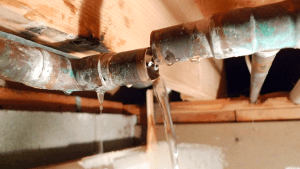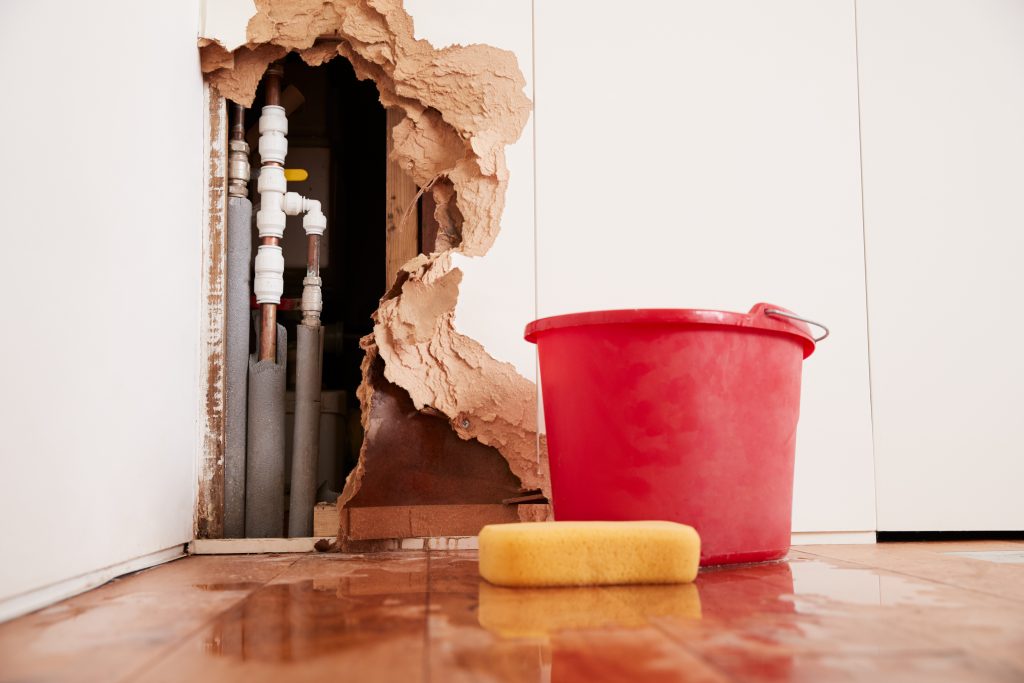How to Check If Your Home Has a Hidden Leak
How to Check If Your Home Has a Hidden Leak
Blog Article
Just about every person will have his or her own rationale when it comes to Locating water leaks.

Early discovery of dripping water lines can reduce a potential disaster. Aside from saving you money, it will lessen the stress as well as irritation. The moment you discover a leak, calling your plumber for repair work is the most effective solution. Some tiny water leakages may not be noticeable. Below are some hacks that aid if you can not detect it with your naked eyes.
1. Take A Look At the Water Meter
Every house has a water meter. Checking it is a guaranteed way that assists you find leakages. For beginners, shut off all the water sources. Make sure no person will purge, use the tap, shower, run the washing equipment or dishwasher. From there, most likely to the meter and watch if it will transform. Since nobody is utilizing it, there must be no movements. That shows a fast-moving leak if it moves. If you spot no changes, wait an hour or 2 and inspect back once more. This means you may have a sluggish leak that can also be below ground.
2. Examine Water Usage
Examine your water bills and also track your water intake. As the one paying it, you ought to see if there are any kind of discrepancies. If you detect sudden changes, despite your usage coinciding, it implies that you have leaks in your plumbing system. Keep in mind, your water bill must fall under the same variety every month. A sudden spike in your costs indicates a fast-moving leak.
A constant boost every month, even with the same practices, shows you have a sluggish leakage that's additionally slowly rising. Call a plumber to extensively inspect your building, particularly if you feel a warm location on your floor with piping beneath.
3. Do a Food Coloring Test
30% comes from bathrooms when it comes to water intake. Examination to see if they are running appropriately. Decline specks of food shade in the tank and also wait 10 mins. There's a leakage between the tank and also bowl if the color in some way infiltrates your dish throughout that time without flushing.
4. Asses Exterior Lines
Don't neglect to examine your outside water lines as well. Test spigots by connecting a garden tube. Needs to water permeate out of the connection, you have a loosened rubber gasket. Replace this and make sure all connections are limited. It will certainly help obtain it expertly examined as well as maintained annually if you have actually got a sprinkler system. One small leakage can waste lots of water and increase your water bill.
5. Check as well as Evaluate the Situation
Property owners need to make it a practice to check under the sink counters and also inside cabinets for any kind of bad odor or mold development. These 2 red flags suggest a leak so timely attention is called for. Doing routine evaluations, even bi-annually, can conserve you from a significant trouble.
Extra importantly, if you recognize your home is already old, keep a watchful eye on your heaters, hose pipes, pipelines and so on. Look for discolorations and also damaging as a lot of home appliances and pipelines have a life expectancy. They will certainly likewise normally weaken due to wear and tear. Do not wait for it to escalate if you think leaking water lines in your plumbing system. Call an expert plumber right now so you don't wind up with a dreadful mess in your house.
Early discovery of leaking water lines can mitigate a prospective calamity. Some tiny water leakages may not be visible. Examining it is a guaranteed way that helps you find leakages. One little leakage can squander lots of water and spike your water bill.
If you believe leaking water lines in your plumbing system, don't wait for it to intensify.
WARNING SIGNS OF WATER LEAKAGE BEHIND THE WALL
PERSISTENT MUSTY ODORS
As water slowly drips from a leaky pipe inside the wall, flooring and sheetrock stay damp and develop an odor similar to wet cardboard. It generates a musty smell that can help you find hidden leaks.
MOLD IN UNUSUAL AREAS
Mold usually grows in wet areas like kitchens, baths and laundry rooms. If you spot the stuff on walls or baseboards in other rooms of the house, it’s a good indicator of undetected water leaks.
STAINS THAT GROW
When mold thrives around a leaky pipe, it sometimes takes hold on the inside surface of the affected wall. A growing stain on otherwise clean sheetrock is often your sign of a hidden plumbing problem.
PEELING OR BUBBLING WALLPAPER / PAINT
This clue is easy to miss in rooms that don’t get much use. When you see wallpaper separating along seams or paint bubbling or flaking off the wall, blame sheetrock that stays wet because of an undetected leak.
BUCKLED CEILINGS AND STAINED FLOORS
If ceilings or floors in bathrooms, kitchens or laundry areas develop structural problems, don’t rule out constant damp inside the walls. Wet sheetrock can affect adjacent framing, flooring and ceilings.
https://www.servicemasterbyzaba.com/blog/how-to-detect-water-leakage-in-walls/

I recently found that entry about Top leak detection hacks when looking around the internet. Make sure you take the opportunity to share this post if you appreciated it. We appreciate reading our article about Locating water leaks.
Report this page